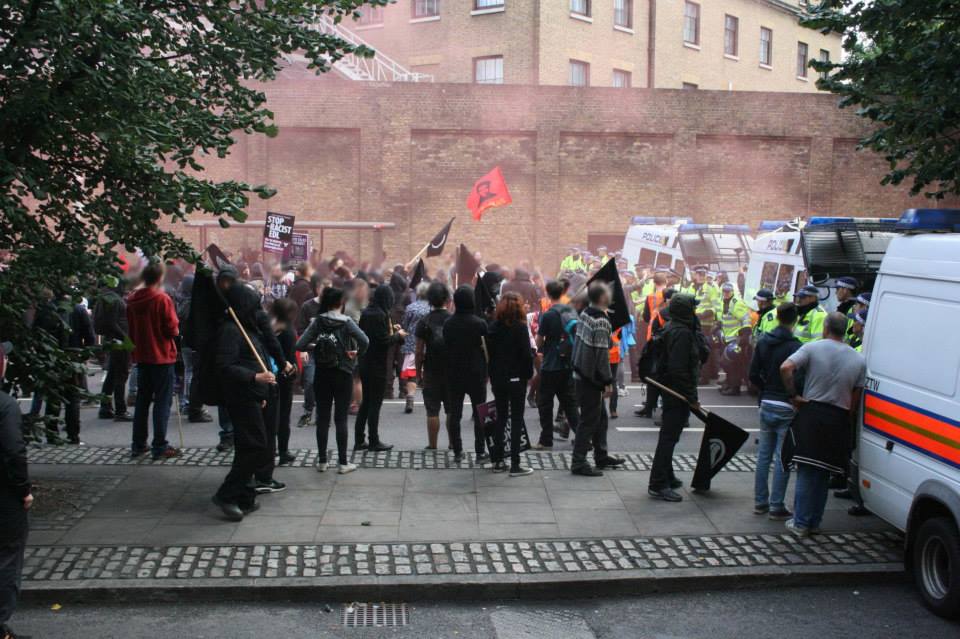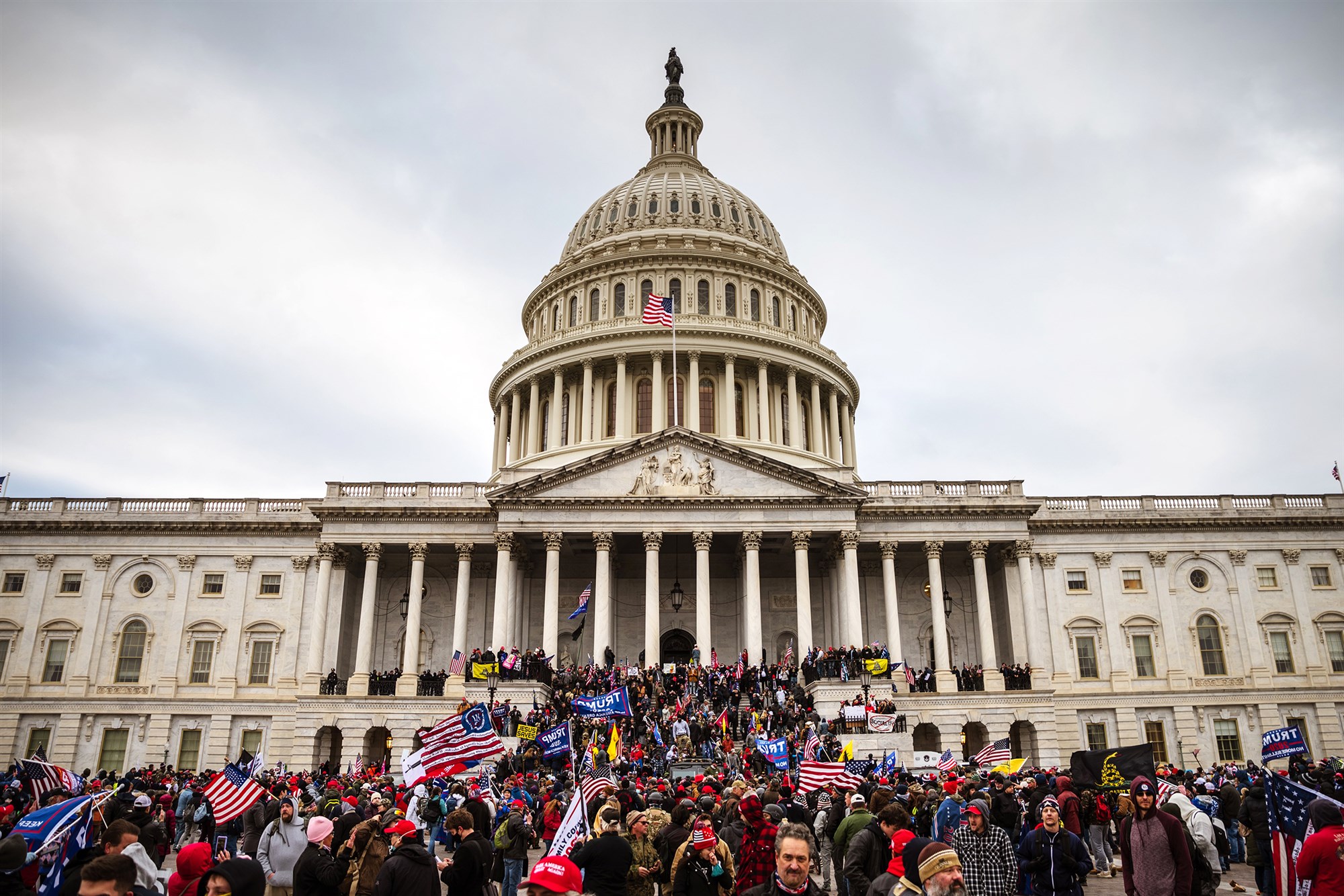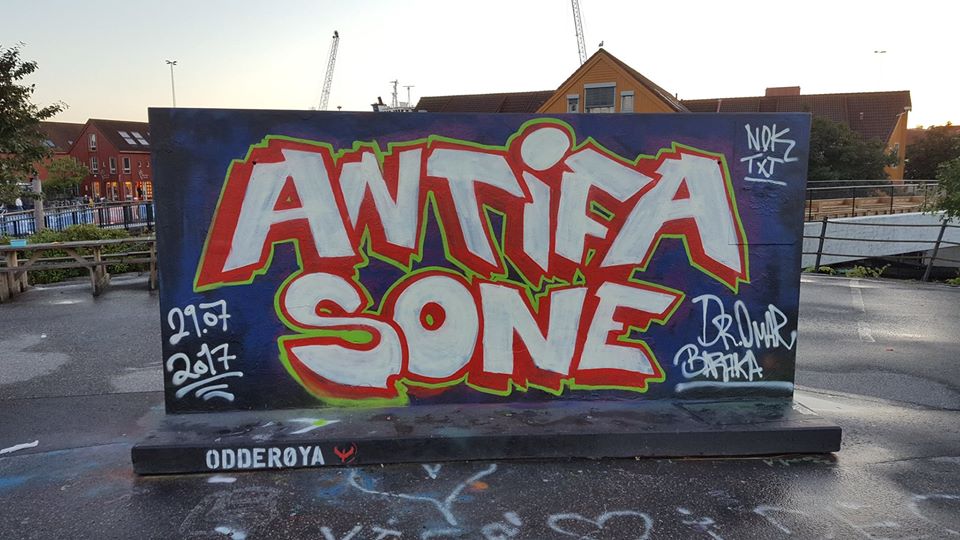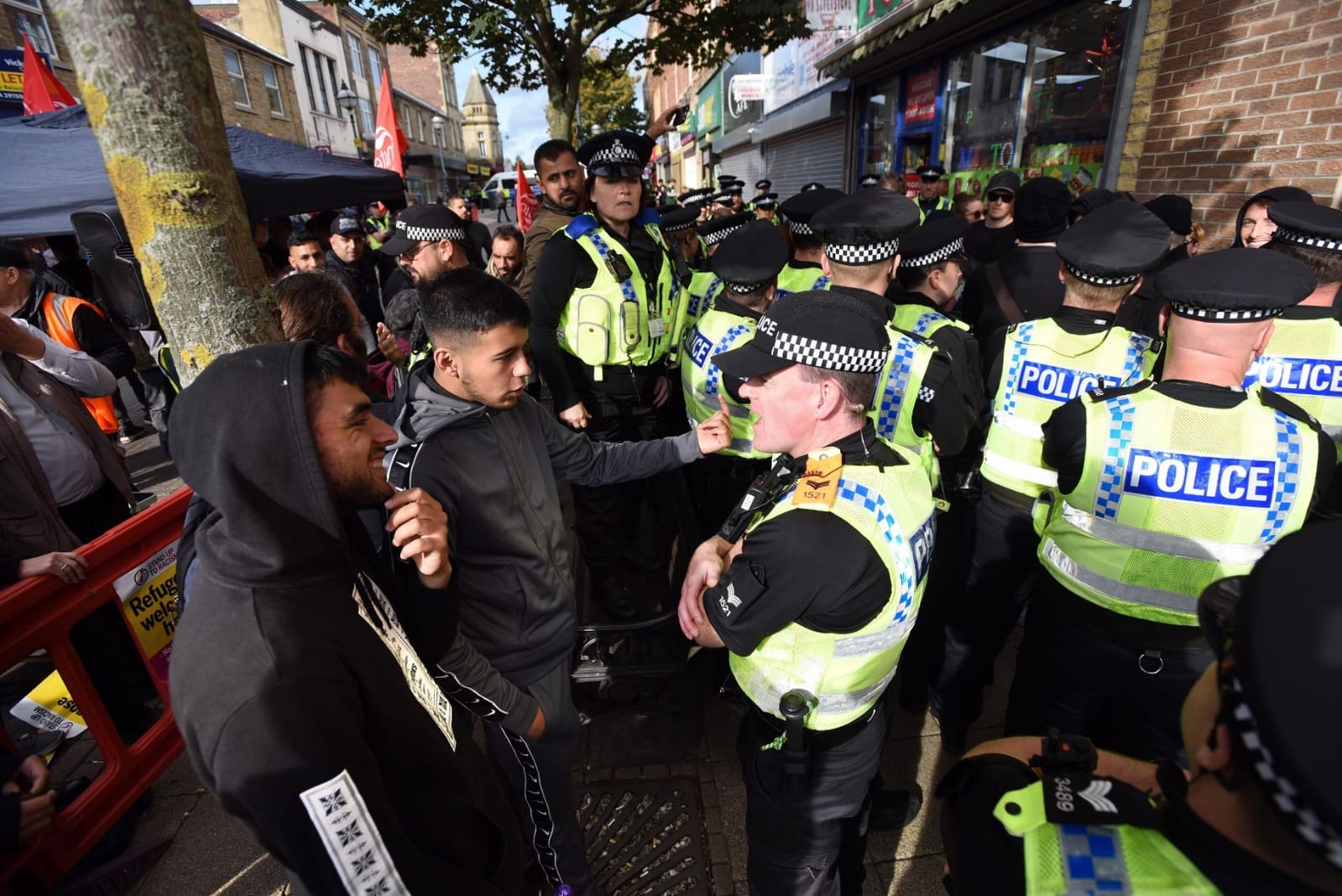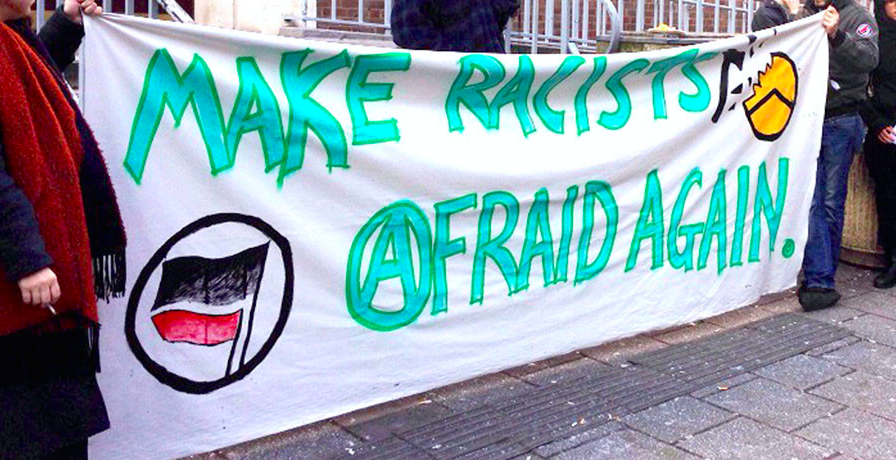As the dust settles from Saturday the 7th of September’s demonstration against the EDL we should start reflecting on what happened that day and what it means for present anti-fascist struggle and the struggle of the wider left on the streets.
A few things mark out the Tower Hamlets mobilisation. As both the EDL’s attempt to return to the area after the Woolwich attack and the first big mobilisation by the newly formed Anti-Fascist Network it was always going to be one to pay attention to to try and get an idea of how recent events have changed street actions for and against the far-right. Another less predictable characteristic that made the day stand out was the policing of both sides, ultimately leading to the arrest of 300 demonstrators, the biggest mass arrests on a political demonstration in years.
Since the attack on Lee Rigby the EDL have gone through a period of increased mobilisation and support and last Saturday was their attempt to capitalise on this by returning to an area they’ve continuously and ridiculously claimed is the heart of “Sharia UK”. Their resurgence has also seen increasing numbers of anti-fascists re-assessing existing anti-fascism, in some cases moving away from UAF or reflecting on the lack of an alternative mass anti-fascist group. This has ended up with new local groups forming, most coalescing around the national Anti-Fascist Network. The build up to Saturday saw London Anti-Fascist Network mobilising the local community in Tower Hamlets, distributing thousands of leaflets in different languages and holding various events, gigs and talks – all with the message of non-hierarchical, mass militant anti-fascism. Their account of the day can be read here.
In the coming weeks as anti-fascists reflect on what happened in Tower Hamlets, it will be worth thinking about why the handling of the EDL and the counter-protesters was so different. One of the reasons EDL arrests were low was because they weren’t even given the chance to breach Section 12 by moving away from the designated protest area because of the massive police containment around their march. This “moving kettle” is the type first seen at the end of the student movement when Total Policing came into effect. By comparison anti-fascists didn’t face such a strict initial cordon but were instead subjected to the largest mass arrest in recent years. It would have been very easy to do something similar at Altab Ali Park and prevent anti-fascists moving from there at all during the time of the demonstration, and yet the police chose not to do that and instead allowed a section of demonstrators to move well out of the area before attempting to block them. The effect was to split militant anti-fascists from the more liberal end of the spectrum and then, when they were well away from the designated protest area, kettle and mass arrest them. It’s clearly very worrying that police are moving more and more towards the use of mass arrests and we should bear this in mind for future street actions.
Despite the arrests, that the turn out may have been less than anticipated and that the EDL weren’t prevented from marching through a busy part of London, over Tower Bridge and all the way to Aldgate, there’s still somehow a feeling of positivity after Saturday. Apart from anything else, it’s pretty hard not to feel positive when you’ve seen a group of militant anti-fascists running down Cable Street to confront the far-right with locals cheering them on and shouting “Keep going, keep going! There’s no cops down here!”. Far from the usual looks of confusion or shock a black bloc normally gets from passers-by, it seemed that most locals knew what it was about already and around the area some even joined in. This more natural affinity between the local community and militant anti-fascism is testament to the work done by LAFN in the weeks preceding the demonstration. Theirs’ was a marked change from the type of community outreach that has been dominant in anti-fascism in recent years: that of aiming to get “community leaders” onside and hoping that does the job. Instead LAFN aimed at doing grassroots work to make sure they were getting known in the community and building links with ordinary people in the area whatever their identity, race, religion or affiliation.
Another positive was the sense of unity and strength amongst anti-fascists. 700 is a fairly small group to push through several streets, dodging police and breaking through cordon after cordon but perhaps the sense of ownership by having prominent anti-fascist group as an alternative to UAF made people feel more determined on the day. The support for arrestees afterwards, from LDMG, GBC, LAFN and others, was remarkable and comrades rose to the mammoth task of going to stations all over London to support 286 people. This solidarity was reflective of a day creating and solidifying new bonds amongst a new wave of militant anti-fascists. An unexpected side-effect of Saturday’s mass arrests could be to bring these emerging anti-fascist groups together, and already local groups that met in the middle of kettles or outside police stations waiting for friends to be released are talking about working together to provide support for those arrested and in the struggle against fascism generally.
Saturday has shown that AFN is capable of making some crucial political links: between militant anti-fascists and local working-class communities; and between new anti-fascist groups nationally. Black bloc tactics alone won’t win the fight against the far-right, but Saturday showed that AFN and militant anti-fascism is both capable of and willing to do much more than that.
The EDL may not have had anywhere near the same number of arrests as anti-fascists during their Tower Hamlets demonstration, but it would be extremely difficult for the day to be seen as a success for the group. Despite expecting thousands only 500-700 people turned up at the national demonstration – a similar number to regional demos in much smaller cities which are usually billed as less important events. Having had demonstrations shrink smaller and smaller since their founding (aside from a couple of spurts after particular events), the organization has been shown to be woefully inadequate. With no real outreach to speak of apart from facebook events and occasional headlines the group remains largely within the same networks and hasn’t grown. This lack of building has meant the EDL haven’t been able to retain numbers from their resurgence after the Woolwich attack. By comparison, militant anti-fascism has now been shown to be breaking out, making in-roads into communities and gathering more numbers. However, this shouldn’t lull anti-fascists into a false sense of security. The far-right may not have an the organizational capacity to create a strong movement but Woolwich has shown that they remain in public consciousness as a pole of attraction during a crisis. The proliferation of EDL demonstrations since Woolwich will help to cement this, and other far-right groups like the Infidels and even the NF have been getting bolder in their publicity recently.
Tower Hamlets has shown that we can build in communities and create links to militant anti-fascism, however we must continue along this path not only by opposing the EDL on city streets during demonstrations but in working class communities that are victimised and scape-goated through racism or where the ideas of the far-right are allowed to spread as a solution to austerity.
Written by a member of Leeds Plan C

